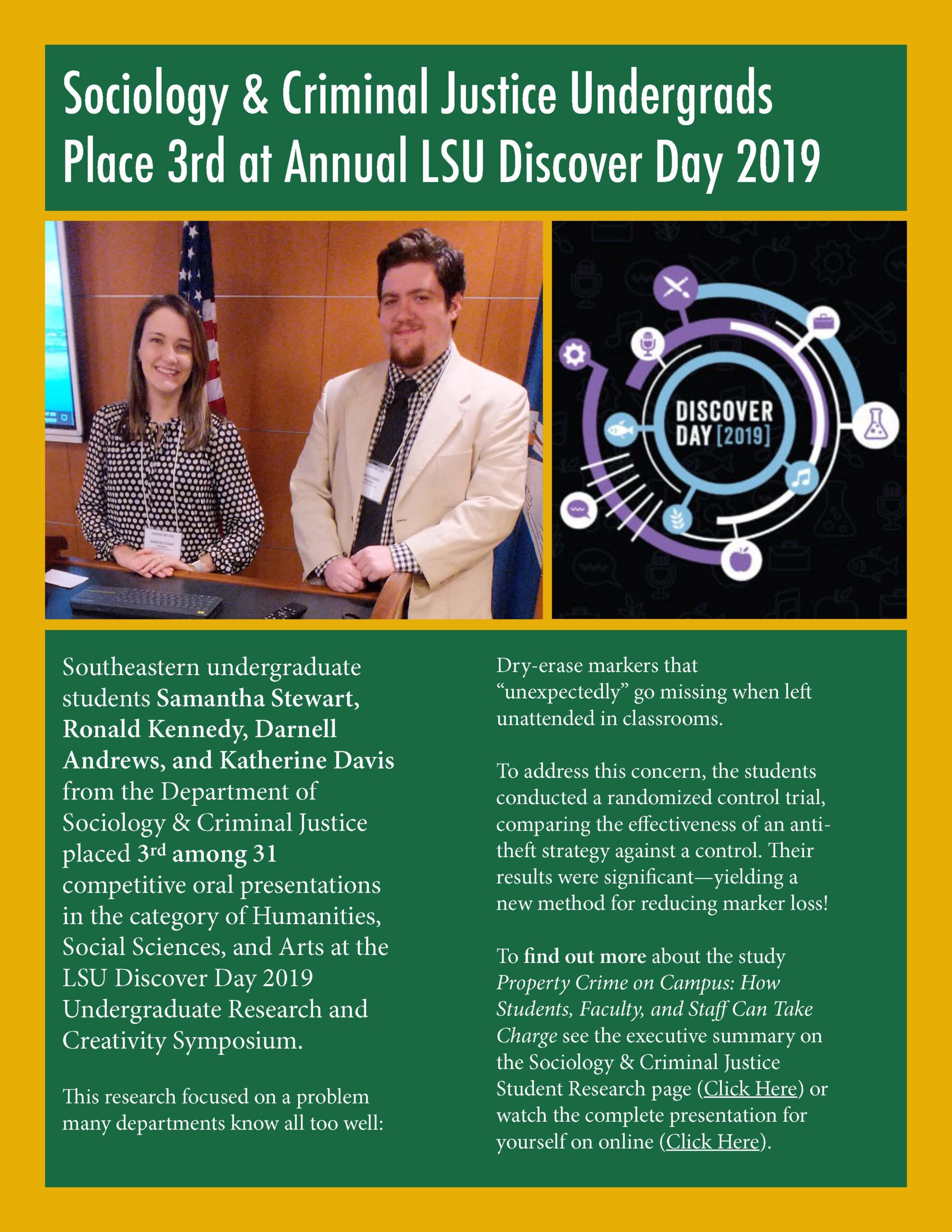This website uses cookies so that we can provide you with the best user experience possible. Cookie information is stored in your browser and performs functions such as recognising you when you return to our website and helping our team to understand which sections of the website you find most interesting and useful.
Cameron Dumas presents the latest findings on race, class, and incarceration in Louisiana at the ULL Undergraduate Research Conference
Cameron Dumas presented her original research at the Undergraduate Research Conference sponsored by the University of Louisiana at Lafayette, University of Louisiana at Lafayette Honors Program, and Louisiana Council On Excellence in Undergraduate Research (LaCOEUR)
This is the second time students from Southeastern Louisiana University have attended this conference through the Department of Sociology & Criminal Justice’s Research Experiences for Undergraduate program. And yet again they were the center of the best attention.
Ms. Dumas’ research explored the intersectionality of incarceration in Louisiana. Drawing on federal and state level records, she showed that poor citizens were more likely to be incarcerated than those above the poverty line—but that this gap was much narrower for Black citizens compared to White citizens.
While not a competitive session, she clearly stole the show. In fact, you can watch her presentation online at https://youtu.be/nFK1jSl5yrY. Her presentation generated a genuine interest among attendees and sparked new directions for research and policy.
Please congratulate her on her accomplishment if you see her on campus. She definitely earned it!
“I’ve always been interested in African Americans, intersectionality, and their relationship with the criminal justice system. Through my research I’ve taken steps to do what I want to do in life, which is to help reduce the rates of incarceration within the Black community.” ~ Cameron Dumas
Students Prevent Crime On Campus

Fayard Hall has a problem with crime. Dry erase markers, when left unattended, go missing. Recognizing the gravity of this situation, students from the Department of Sociology and Criminal Justice conducted a study on what could be done about it.
Designing the Study
Inside the classroom, students brainstormed strategies to make markers less desirable. One student suggested hanging anti-theft posters. Others suggested installing fake security cameras. Ultimately they decided that labels with the message “Property of Fayard Hall,” while simple, might be enough.
To test their hypothesis, the students performed a randomized control trial. They randomly assigned 11 labeled markers to 11 classrooms. The remaining 11 classrooms got markers without labels.
Executing the Experiment
The following morning they went to each classroom and dropped off the markers. Three weeks later, they followed up.
The Results
The labels worked! Unlike the markers without labels, most of the markers with labels were recovered.
Reducing Crime
Through this study, students gained firsthand experience with experimental research. They planned, carried out, and witnessed for themselves the results of their efforts. But most importantly, they achieved their goal. They discovered an effective new method to prevent markers from unexpectedly going missing on campus.
Thank You!
This project is indebted to the help of secretaries and department heads from the departments of Sociology and Criminal Justice, Political Science and History, and Mathematics for generously providing this study with access to their classrooms. To you all we say “Thank You Very Much!”